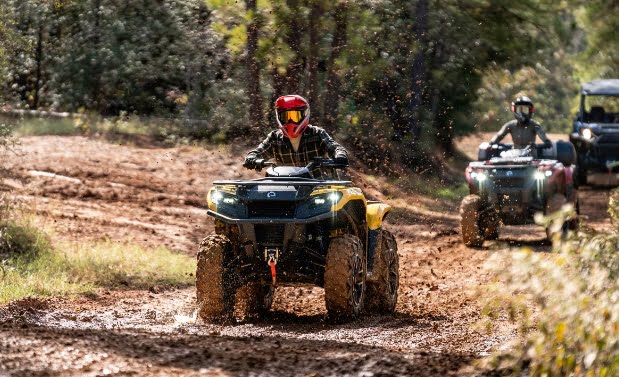Atv Values

Thinking about buying or selling an all-terrain vehicle (ATV)? Grasping ATV values is crucial for making informed decisions. This guide explores factors affecting ATV worth, resources for valuation, and negotiation tips.
Factors Affecting ATV Value
- Make, Model, and Year: Popular brands and sought-after models typically hold their value better. Newer models command higher prices compared to older ones.
- Condition: A well-maintained ATV with low mileage and minimal wear and tear will fetch a premium price. Conversely, a neglected ATV with extensive damage will be worth significantly less.
- Features and Upgrades: ATVs equipped with desirable features like winches, power steering, or upgraded suspension systems will generally be more valuable.
- Location: Market demand for specific ATVs can vary depending on location. For example, hunting-oriented ATVs might be worth more in rural areas.
- Supply and Demand: If there’s a high demand for a particular ATV model with limited supply, expect a higher price point.
Resources for ATV Valuation
- Online Pricing Guides: Reputable websites like Kelley Blue Book (KBB) and J.D. Power offer valuation tools specifically for ATVs. These resources consider factors like make, model, year, condition, and mileage to provide an estimated market value.
- Dealer Research: Consulting with ATV dealerships in your area can provide valuable insights into current market prices for similar models.
- Classified Ads: Scouring classifieds websites like Craigslist or ATV Trader can give you a sense of asking prices for comparable ATVs. However, be mindful that asking price doesn’t always reflect final selling price.
Negotiation Tips for ATVs
- Be Prepared: Research the fair market value of the ATV using the resources mentioned above. This empowers you to make informed offers or counteroffers.
- Highlight Strengths: If you’re selling, emphasize the ATV’s strengths like pristine condition, desirable features, or low mileage. If you’re buying, be prepared to point out any cosmetic imperfections or potential mechanical issues to justify a lower price.
- Start Low (or High): As a buyer, begin with a slightly lower offer than the seller’s asking price. Conversely, if you’re selling, start with a price slightly higher than your desired minimum.
- Be Patient and Courteous: Negotiation is a process. Maintain a polite and professional demeanor throughout the discussions.

Conclusion
By understanding the factors affecting ATV values, leveraging valuation resources, and employing effective negotiation strategies, you can ensure a successful buying or selling experience in the exciting world of all-terrain vehicles.
Note: This outline provides a framework for a comprehensive article on ATV values. You can expand on each subheading with additional details and examples for a well-rounded piece.
